Come join us now, and enjoy playing your beloved music and browse through great scores of every level and styles!
Can’t find the songbook you’re looking for? Please, email us at: sheetmusiclibrarypdf@gmail.com We’d like to help you!
Table of Contents
Happy birthday Steve Reich! The minimalist pioneer turns 89 today.
Steve Reich, “Music for 18 Musicians” – FULL PERFORMANCE with eighth blackbird
Music for 18 Musicians by Steve Reich.
PERFORMANCE: February 5, 2011 Museum of Contemporary Art Chicago Performance Produced by eighth blackbird Filmed by Dan Nichols, Nichols Media

Best Sheet Music download from our Library.
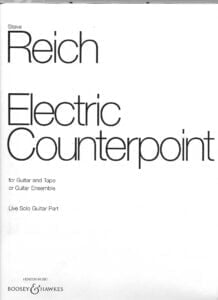
Please, subscribe to our Library.
If you are already a subscriber, please, check our NEW SCORES’ page every month for new sheet music. THANK YOU!
Steve Reich: The Architect of Sonic Pulse and Process
Steve Reich stands as a colossus in the landscape of 20th and 21st-century music, a foundational pillar of what came to be known as Minimalism. More than just a composer, Reich is a sonic architect, a philosopher of sound who redefined the very materials of music—rhythm, phase, and pattern—to create a body of work that is intellectually rigorous, emotionally potent, and profoundly influential. His exploration of gradual process, phase shifting, and the speech-melody nexus has not only shaped contemporary classical music but has also permeated the worlds of rock, electronic, and film music, making him one of the most relevant and revered composers of our time.
Browse in the Library:
Or browse in the categories menus & download the Library Catalog PDF:
Biography: From Philosophy to Percussion
Born Stephen Michael Reich in New York City on October 3, 1936, his early exposure to music was through the standard piano lessons and, significantly, through the recordings of Bach, Stravinsky, and swing jazz. He graduated from Cornell University in 1957 with a degree in Philosophy, a discipline that would deeply inform his compositional mindset. It was only after graduation that he seriously pursued music, studying composition at the Juilliard School (1958-1961) with William Bergsma and Vincent Persichetti, and later at Mills College (1961-1963) with Luciano Berio.
The milieu of the early 1960s was crucial. Reich was in San Francisco during the birth of the counterculture and the heyday of the Tape Music Center. More importantly, he was immersing himself in jazz, particularly the work of John Coltrane, and studying West African and Balinese music. This fusion of Western classical training, jazz harmony, and non-Western rhythmic structures became the crucible in which his unique style was forged.
Returning to New York in 1965, he formed his own ensemble, Steve Reich and Musicians, to have direct control over the performance of his increasingly complex and idiosyncratic music. Key early works like It’s Gonna Rain (1965) and Come Out (1966) were created using tape loops, while Piano Phase (1967) translated this concept to live performers. His reputation grew steadily throughout the 1970s with masterpieces like Drumming (1970-71) and Music for 18 Musicians (1974-76), the latter catapulting him to international fame.
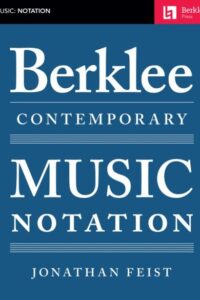
A pivotal study of Hebrew cantillation in Jerusalem in 1976-77 led to his first explicitly Jewish work, Tehillim (1981), marking a new phase in his career. Since then, he has continued to produce major works, engaging with historical texts, video art, and digital technology, right up to recent works like Reich/Richter (2019) and Traveler’s Prayer (2021). He has received numerous accolades, including the Pulitzer Prize for Music in 2009 for Double Sextet and two Grammy Awards.
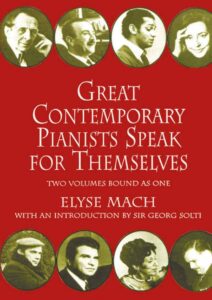
Music Style and Technique: The Grammar of Process
Reich’s style is built on a few core principles that he has explored and refined over six decades.
- Phase Shifting: This is Reich’s most famous technical innovation. It involves two or more identical melodic or rhythmic patterns played simultaneously at slightly different tempos. As they move in and out of sync, mesmerizing auditory illusions and new rhythmic and melodic patterns emerge. This began with tape loops slipping out of phase in It’s Gonna Rain and was masterfully applied to live performers in Violin Phase and Piano Phase. It is a literal, audible representation of a musical process.
- Gradual Process: Reich famously stated, “I am interested in perceptible processes. I want to be able to hear the process happening throughout the sounding music.” The music is not about dramatic, expressive gestures but about setting a process in motion and letting it unfold. The listener hears the journey from point A to point B, whether it’s the slow addition of instruments in Drumming or the shifting harmonic cells of Music for 18 Musicians.
- Rhythmic Construction: Reich’s music is fundamentally rhythmic. His study of West African drumming (particularly the Ewe people) and Balinese Gamelan taught him about additive rhythm, composite patterns, and the idea of multiple interlocking parts creating a unified, driving whole. A Reich piece often feels like a complex, living machine powered by its own internal pulse.
- Canon and Counterpoint: As his style matured, Reich incorporated sophisticated canonic techniques. In works like Vermont Counterpoint or Electric Counterpoint, multiple lines (often pre-recorded) weave in and out of each other in intricate, rhythmic counterpoint, creating a dense and shimmering texture.
- Speech-Melody: Starting with Different Trains (1988), Reich began using recorded speech as a melodic source. The contours and rhythms of spoken phrases are notated and then given to instruments to play literally. This technique blurs the line between speech and music, creating a powerful, documentary-like emotional impact.

Harmony and Chord Progressions
Reich’s harmonic language is predominantly tonal or modal, but it functions differently from traditional functional harmony. He does not use chord progressions to build tension and release in the classical sense.
- Static Harmony and Slow Harmonic Rhythm: Early works often revolve around a single chord or mode for extended periods. The interest comes from the rhythmic and phasing activity on top of this static harmony.
- Harmonic Cells and Pulsation: In his landmark Music for 18 Musicians, harmony is organized into a cycle of 11 chords. Each chord is held as a “pulse” for a variable duration, with musicians moving through the cycle. The harmony changes slowly, creating a lush, hypnotic, and constantly shifting soundscape. It’s a pulsing, breathing harmonic organism.
- Diatonic Clarity with Dissonance: Reich’s harmonies are often built from clear, diatonic triads, but he frequently stacks them or moves them in ways that create biting dissonances and complex, added-note chords (like the famous opening chord of Music for 18 Musicians, which is essentially a D dominant 11th chord). The result is music that sounds both familiar and strangely new.
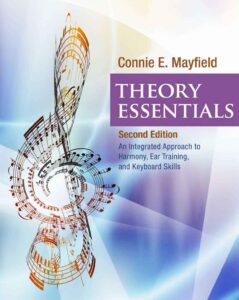
Improvisational Licks and “Musicianly Patterns”
While Reich’s music is meticulously notated and does not feature jazz-style improvisation, it is deeply informed by the concept of improvisation, particularly from his study of jazz and non-Western music. The “licks” in Reich’s music are not improvised but are composed patterns that have an improvisatory, “musicianly” feel.
- Patterns and Grooves: The building blocks of pieces like Drumming or Clapping Music are short, repeating rhythmic patterns (called “cells” or “patterns”) that a drummer or percussionist might practice. These are often syncopated and interlock with other patterns to create a composite groove.
- The “Reich Lick”: Musicians who play his music often develop a fluency with these specific, repetitive patterns. A “Reich lick” might be a specific marimba pattern from Music for 18 Musicians or a guitar figure from Electric Counterpoint. Mastery lies not in virtuosic variation but in the absolute precision, stamina, and rhythmic vitality required to execute these patterns for extended periods, making them feel alive and organic.
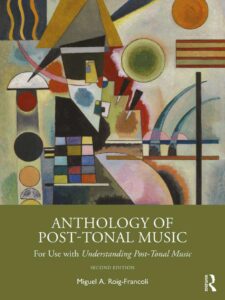
Cooperation with Other Artists
Reich has frequently collaborated with artists outside his immediate musical sphere.
- Beryl Korot (Video Artist): His most significant collaboration is with his wife, video artist Beryl Korot. Together they pioneered a new form of “video opera” with The Cave (1993) and Three Tales (2002), where music and video are structurally integrated, with the speech-melody technique extended to on-screen subjects.
- Visual Artists: He collaborated with Gerhard Richter on Reich/Richter (2019), where his music was composed in direct response to Richter’s visual art. He also worked with his cousin, the painter Michael Reich, on early pieces.
- Choreographers: His music has been a favorite of the dance world. Notable collaborations include Einstein on the Beach (with Philip Glass, Robert Wilson, and Lucinda Childs) and works for the choreographer Anne Teresa De Keersmaeker, whose early pieces were set almost exclusively to Reich’s music.
- Other Musicians: While his ensemble is his primary vehicle, he has worked with groups like the Kronos Quartet (Different Trains) and individual virtuosos like Pat Metheny, for whom he wrote Electric Counterpoint.
Influences and Legacy
Influences on Reich:
- Jazz: John Coltrane, Charlie Parker, and Miles Davis were profound influences, particularly in their use of modal harmony and extended improvisation.
- Non-Western Music: His studies of Balinese Gamelan (University of Washington, 1973-74) and West African drumming (Ghana, 1970) provided the rhythmic and textural foundation for his style.
- Early Music: The polyphonic music of Pérotin and Machaut from the 12th-14th centuries influenced his approach to counterpoint and static harmony.
- 20th-Century Composers: Stravinsky (rhythm), Bartók (folk modes), and Berio (with whom he studied tape music) were key figures.
Reich’s Legacy:
Reich’s impact is immeasurable. He, along with Terry Riley, La Monte Young, and Philip Glass, defined Minimalism and brought it from the experimental loft scene to the concert hall. His influence extends far beyond classical music:
- Popular Music: Bands like Talking Heads, Radiohead, Brian Eno, and Sufjan Stevens have explicitly cited his influence. The entire genre of electronic music, from ambient and techno to progressive rock, is deeply indebted to his use of repetition, phase, and pulse.
- Contemporary Classical: Composers like John Adams, Michael Gordon, Julia Wolfe, and a generation of post-minimalists have built upon his foundations.
- Film and Media: His rhythmic drive and textural clarity have made his music a go-to for film and television scores seeking to build tension and momentum.
Major Works and Compositions
- Early Tape Works (1960s): It’s Gonna Rain (1965), Come Out (1966) – foundational works using phasing tape loops.
- Early Phase Works (1960s): Piano Phase (1967), Violin Phase (1967) – translating the phasing process to live instruments.
- Mature Masterpieces (1970s): Drumming (1970-71) – a 90-minute tour-de-force of rhythmic construction; Music for 18 Musicians (1974-76) – his breakthrough work, a masterpiece of pulsing harmony and orchestral color.
- The Jewish Works (1980s): Tehillim (1981) – sets Hebrew psalms with a unique, rhythmic vitality; The Desert Music (1984) – a large-scale work for chorus and orchestra setting texts by William Carlos Williams.
- The “Documentary” Works (Late 1980s-2000s): Different Trains (1988) – for string quartet and tape, a profound Holocaust meditation using speech-melody; The Cave (1993) and Three Tales (2002) – video operas with Beryl Korot.
- 21st-Century Works: Double Sextet (2007) – Pulitzer Prize-winning; WTC 9/11 (2010) – uses speech-melody to document the 9/11 attacks; Radio Rewrite (2012) – based on two Radiohead songs.
Filmography
Steve Reich has not been a traditional film composer, but his music has been used extensively in film and he has created works specifically for the gallery and screen.
- Works for Gallery/Screen: The Cave (1993) and Three Tales (2002) are full-length video operas.
- Music in Film/TV: His music appears in films such as The Hunger (1983), The Accountant (2016 – which features Music for 18 Musicians prominently), and numerous documentaries for its atmospheric and driving qualities.
- Collaborative Film Projects: Reich/Richter (2019) is a major work created to accompany a film by Corinna Belz and Gerhard Richter.
Discography (Selective)
Reich’s discography is vast, primarily on labels like Nonesuch, ECM, and Deutsche Grammophon. Key recordings include:
- Drumming (1974, DG) – The first recording by his own ensemble, definitive.
- Music for 18 Musicians (1978, ECM) – The recording that introduced his music to a massive audience.
- Different Trains / Electric Counterpoint (1989, Nonesuch) – Kronos Quartet and Pat Metheny, a classic.
- Tehillim / The Desert Music (1985, ECM) – Essential recordings of his choral works.
- WTC 9/11 / Mallet Quartet / Dance Patterns (2011, Nonesuch) – Showcasing his later period.
- Radio Rewrite (2014, Nonesuch) – Performed by Alarm Will Sound and others.
- Reich/Richter (2020, Nonesuch) – A recent highlight of his collaboration with visual art.
Steve Reich’s career is a testament to the power of a singular vision. By stripping music down to its essential elements of rhythm and repetition and rebuilding it through rigorous, perceptible processes, he created a new musical language that speaks directly to the contemporary psyche. His work is a bridge—connecting the concert hall to the rock club, the ancient rhythms of Africa to the digital pulse of the 21st century, and the intellectual rigor of philosophy to the visceral power of a steady beat. He is not merely a composer of his time but a defining voice whose sonic architecture continues to inspire, challenge, and move listeners around the world.
